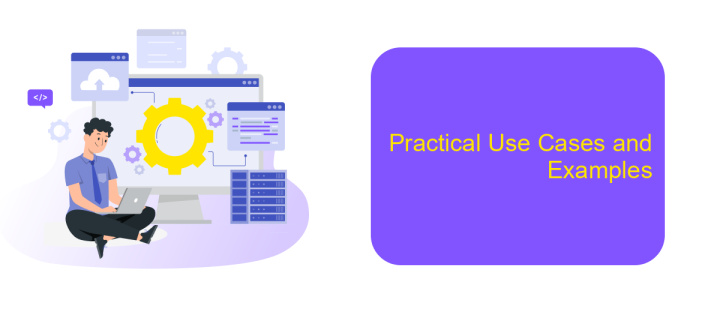SharePoint Integration API
The SharePoint Integration API is a powerful tool that enables seamless connectivity between SharePoint and other applications, enhancing collaboration and productivity. This API allows developers to access and manipulate SharePoint data, automate workflows, and integrate with third-party services. By leveraging the SharePoint Integration API, organizations can streamline their processes, improve data management, and create customized solutions tailored to their specific needs.
Introduction to SharePoint Integration API
SharePoint Integration API is a powerful tool that allows developers to seamlessly connect and interact with SharePoint's vast array of features. This API enables the creation of custom integrations, enhancing productivity and collaboration within organizations. By leveraging the capabilities of SharePoint Integration API, developers can automate processes, manage documents, and access data efficiently, thereby streamlining business operations.
- Access and manipulate SharePoint lists and libraries programmatically.
- Automate workflows and business processes with ease.
- Integrate third-party applications to extend SharePoint functionality.
- Utilize RESTful services for robust data interactions.
- Facilitate secure authentication and authorization mechanisms.
Utilizing SharePoint Integration API opens up a world of possibilities for developers and businesses alike. By integrating SharePoint with other systems, organizations can create a more cohesive and efficient digital ecosystem. Whether it’s for automating mundane tasks or building comprehensive solutions, this API serves as a crucial component in modern enterprise environments. As businesses continue to evolve, the SharePoint Integration API remains a vital tool for driving innovation and achieving operational excellence.
Key Features and Benefits

SharePoint Integration API offers a robust set of features that streamline collaboration and data management across various platforms. By enabling seamless connectivity between SharePoint and other applications, the API enhances productivity through automated workflows and real-time data synchronization. Users can effortlessly manage documents, share information, and collaborate on projects, all within a secure and scalable environment. The API's flexibility allows for custom integrations tailored to specific business needs, ensuring that organizations can adapt and grow without technological constraints.
One of the significant benefits of using SharePoint Integration API is its compatibility with services like ApiX-Drive, which simplifies the integration process. ApiX-Drive provides an intuitive interface that allows users to set up connections without extensive coding knowledge, reducing the time and resources needed for deployment. This ease of use empowers businesses to quickly implement and modify integrations, fostering agility and innovation. Additionally, the API supports robust security measures, ensuring that sensitive data remains protected throughout the integration process, making it an ideal solution for organizations prioritizing data integrity and compliance.
Authentication and Authorization

When integrating with the SharePoint API, understanding authentication and authorization is crucial for secure and seamless access. SharePoint supports multiple authentication methods, including OAuth, SAML, and NTLM, allowing developers to choose the most suitable option based on their application's needs and security requirements. Proper configuration of these methods ensures that only authorized users and applications can access your SharePoint resources.
- OAuth: This method involves obtaining an access token, which is used to authenticate API requests. It is a popular choice for web applications and services.
- SAML: Security Assertion Markup Language (SAML) is often used in enterprise environments for single sign-on (SSO) capabilities, enabling users to authenticate once and gain access to multiple applications.
- NTLM: Windows NT LAN Manager (NTLM) is a challenge-response authentication protocol used in legacy systems and environments where Kerberos is not available.
Implementing the right authentication and authorization strategy helps protect your SharePoint data from unauthorized access. It is essential to regularly review and update these configurations to align with evolving security standards and organizational policies. Additionally, monitoring access logs can provide insights into potential security threats and ensure compliance with data protection regulations.
Practical Use Cases and Examples

The SharePoint Integration API offers a versatile set of tools for enhancing collaboration and streamlining business processes. By leveraging this API, organizations can seamlessly connect SharePoint with other enterprise systems, ensuring data consistency and improving workflow efficiency. This integration can be particularly beneficial for businesses looking to automate document management and enhance team productivity.
One practical example is automating the approval process for documents stored in SharePoint. By integrating with workflow management tools, the API can trigger notifications and approvals directly within SharePoint, reducing manual intervention and speeding up decision-making. Additionally, the API supports synchronization with CRM systems, allowing sales teams to access the latest customer information without leaving the SharePoint environment.
- Automating document approval workflows to reduce processing time.
- Synchronizing data between SharePoint and CRM systems for real-time updates.
- Enhancing project management by integrating with task tracking tools.
- Facilitating seamless communication through integration with messaging platforms.
These use cases illustrate the potential of the SharePoint Integration API to transform business operations. By enabling seamless connectivity between SharePoint and other applications, organizations can achieve higher levels of efficiency and collaboration, ultimately driving better business outcomes.
Best Practices and Considerations
When working with SharePoint Integration API, it's essential to prioritize security. Always use HTTPS to encrypt data in transit and implement OAuth for secure authentication. Regularly update your API keys and credentials to prevent unauthorized access. Additionally, ensure that your application only requests the permissions it truly needs, adhering to the principle of least privilege. This minimizes potential security risks and enhances overall system integrity.
For seamless integration, consider using services like ApiX-Drive, which can simplify the process by providing a user-friendly interface for connecting various applications without extensive coding. This tool can help automate workflows and ensure that data is synchronized efficiently across platforms. Before deployment, thoroughly test your integration in a sandbox environment to identify and resolve any issues. Finally, maintain comprehensive documentation for your integration processes to facilitate troubleshooting and future updates, ensuring a robust and sustainable integration strategy.
FAQ
What is SharePoint Integration API used for?
How can I authenticate API requests in SharePoint?
Can I automate data transfer between SharePoint and other platforms?
What permissions are required to use the SharePoint API?
How can I handle errors when using SharePoint Integration API?
Routine tasks take a lot of time from employees? Do they burn out, do not have enough working day for the main duties and important things? Do you understand that the only way out of this situation in modern realities is automation? Try Apix-Drive for free and make sure that the online connector in 5 minutes of setting up integration will remove a significant part of the routine from your life and free up time for you and your employees.

